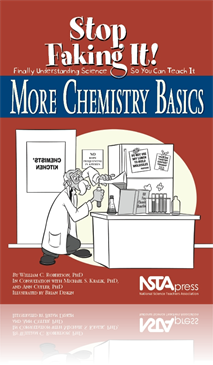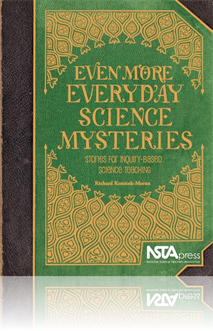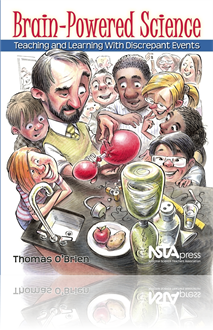All Book Chapters
Book Chapter
Half a Life is Better Than None
Most of chemistry deals with chemical reactions and, hence, with how electrons in atoms behave either in single atoms or when those atoms get together with other atoms. There is a branch, though, that deals with the nuclei of atoms—and that’s wha...
Book Chapter
It would be impossible to investigate even a fraction of organic chemistry in this book, so in this chapter the author goes over a few things that will complement the limited organic chemistry in the first book. This is not a comprehensive chapter on...
Book Chapter
Many of your younger students do not believe that air around us has mass or weight, let alone exerts pressure on us and on everything around us. So, the idea that the atmosphere in which we walk actually has mass and can exert pressure on our world m...
Book Chapter
Analogies: Powerful Teaching-Learning Tools
In this activity, teachers explore how teaching shares some attributes with a variety of other occupations, students consider their respective roles as learners, and both consider the reciprocal, interactive nature of the teaching-learning partnershi...
Book Chapter
Talking Tapes: Beyond Hearing to Understanding
The need to combine fun, hands-on “play” with the mentally engaging, minds-on “work” of learning should be emphasized in professional development settings and in science methods courses. Teachers should emphasize frequently—in words that st...
Book Chapter
Super-Absorbent Polymers: Minds-On Learning and Brain "Growth"
Super-absorbent polymers (SAPs) absorb and retain water up to several hundred times their mass and increase in volume up to 600%. Unlike this prop, students’ brains do not grow/learn by passive absorption of received knowledge from the outside. Lea...
Book Chapter
Mental Puzzles, Memory, and Mnemonics: Seeking Patterns
Various mental puzzles and memory tasks can seem difficult until a heuristic or generalizable problem-solving technique is discovered or invented. A mnemonic (memory device) can help learners remember information. A heuristic or mnemonic can make an ...
Book Chapter
Sound Tube Toys: The Importance of Varying Stimuli
Sound is a form of energy created and transmitted as a vibration or mechanical wave that can vary in pitch (frequency) and volume (amplitude). Simple toys can be used to engage interest and to develop and assess the skills of scientific inquiry and t...
Book Chapter
Convection: Conceptual Change Teaching
Two bottles of different-colored water are placed vertically, one on top of the other with open ends together. They remain stable if the bottle with the hotter (red-colored) water is placed on top of the bottle with the cooler (blue-colored) water. I...
Book Chapter
Brain-Powered Lightbulb: Knowledge Transmission?
This activity explores the closed, battery-powered circuits that convert chemical potential energy to electrical energy to light energy. Since Edison’s invention of the lightbulb, it has been commonly used as a visual symbol of intelligence, ingenu...
Book Chapter
3D Magnetic Fields: Making Meaningful Connections
In this activity, a sealed, transparent container filled with a clear, colorless oil and several tablespoons of iron filings is shaken and a cylindrical magnet is suspended in the middle of the container. Beautiful magnetic field lines are made visua...
Book Chapter
Electric Generators: Connecting With Students
Most students have a very limited sense of where electricity comes from. In this activity, a hand-powered electric generator converts mechanical energy into direct current (DC) electricity that can be used to power a small lightbulb, run an electric ...
Book Chapter
Static Electricity: Charging Up Two-by-Four Teaching
Static electricity is created when two different insulating materials are rubbed together, creating friction that allows electrons to shift from one material to the other. In this activity, a 6-8 ft., 2 in. x 4 in. board balanced on a large watch gla...
Book Chapter
Möbius Strip: Connecting Teaching and Learning
A Möbius strip is a nonorientable, two-dimensional surface with only one side. The one-sided nature of the Möbius strip is an example of an emergent property—a property that is found in a system as a whole, but not in any part of the system. In t...
Book Chapter
Needle Through the Balloon: Skewering Misconceptions
Prior experiences and conceptions that students have about a wide variety of science phenomena (e.g., sharp needles pop balloons) often form barriers to developing more scientifically valid understandings. In this activity, a long needle is passed th...




